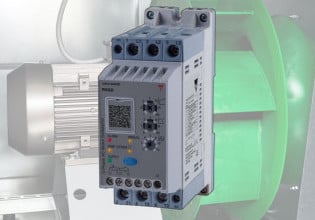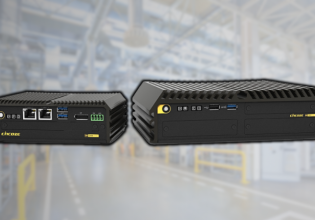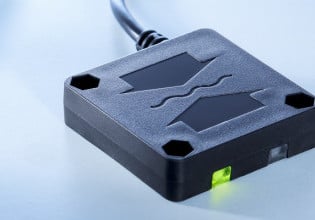Choosing The Right Cables for Industrial Automation
Industrial automation is only possible when the various system components can communicate with each other using physical cable connections. In this article, learn about some of the most popular communication cables and connectors used in the industry.
Industrial automation is only possible when the various system components can communicate with each other. Analog and digital signals have to travel between the field devices and control units. The information also has to travel between the control units and high-level computer systems. This communication is all enabled by wired (and sometimes wireless) networks.
Wired networks rely on physical communication cables and standardized connectors as the medium for information exchange. Various types of communication cables are used in the industry - some far more than others. The cable of choice depends on the use case, established practices, and OEM support. In this article, we will discuss a few of the most popular communication cables and connectors used in the industry.
RJ45 Connector
The RJ45 is one of the most popular networking cable plug structures in the world. RJ stands for registered jack. It is used as the physical interface for connecting voice equipment, data devices, and other telecommunication equipment. It is a ubiquitous connector that is used for landline phone networks and network routers. They are mostly used in commercial and residential environments, but they are also commonly used in industrial control applications. RJ45 cables are ideal for regulated environments.

Figure 1. Communication cables rely on strict standards of colors, pinouts, and shielding capabilities for industrial environments. Image used courtesy of Belden
The RJ45 connector is built in accordance with the Universal Service Ordering Code (USOC) system, defined and implemented by Bell Systems. The specifications define signal semantics, wiring, and physical construction of the connector. RJ45 is an 8-position, 8-contact (8P8C), twisted pair, modular connector.
T568A vs T568B Standards
The T568A standard for RJ45 connectors was codified in 1988. This was modified in 2001 and the standard is T568B. Both standards have four pairs of pins. But the color codes for them are different. The pairs are:
- Pins 4 & 5 are pair 1
- Pins 3 & 6 are pair 2
- Pins 1 & 2 are pair 3
- Pins 7 & 8 are pair 4
The signals at each pin are given in the table below. It also contains color schemes for T568A and T568B standards. The rationale for having two standards is given in the next section.
| Pin | Signal Name | T568A color | T568B color |
| 1 | TX+_D1 | White, green stripe | White, orange stripe |
| 2 | TX-_D1 | Green | Orange |
| 3 | RX+_D2 | White, orange stripe | White, green stripe |
| 4 | BI+_D3 | Blue | Blue |
| 5 | BI-_D3 | White, blue stripe | White, blue strip |
| 6 | RX-_D2 | Orange | Green |
| 7 | BI+_D4 | White, brown stripe | White, brown stripe |
| 8 | BI-_D4 | Brown | Brown |
| TX = Transmit; RX = Receive; BI = Bidirectional; D1-D4 = Data | |||
Table 1. RJ45 Pinout Standards
Standard and Crossover Cable
Communication cables have a connector at each end of the cable. The connector standard used at each end of the cable determines the type of connector. Standard connectors or straight-through connectors use the same standard on both ends of the cable. It could be T568A or T568B, but both the connectors of the cable must be using the same standard.
For crossover connectors, one end uses T568A standard and the other end uses T568B standard. Standard connectors are used when devices are connected to a network hub, switch, or router. Crossover connectors are used when devices are connected together without a network hub, or point-to-point.
In the table above, the bidirectional pins do not change between A and B standards, but the TX and RX are reversed. When connecting point-to-point, the transmit of one machine is the receive for the other, and vice-versa. Most modern devices are equipped with auto-detection ability, so either type of cable may be used. For some older equipment, the crossover cable may be specified.
M12 Ethernet
RJ45 connectors are widely used for commercial purposes. But it is not always ideal for use in factories. The environment in plants can easily destroy RJ45 cables and render them useless. Cables used for industrial Ethernet are exposed to temperature swings, oils, corrosive chemicals, moisture, and abrasion. Flexing and movement of cables can also exert pressure, especially at the ends when the exposed wires are terminated at the jack without the proper use of strain relief. The number of twists also has to be within an acceptable range. RJ45 fails in many of these aspects and is not fit for industrial use.
M12 Ethernet connectors are best suited to be used in industrial settings. It is a circular connector, commonly used to connect actuators, sensors, and Fieldbus in factories. It is much more rugged than the RJ45 and can withstand harsh environments. The spacing between pins of M12 connectors maintains signal integrity. Special consideration is taken in the manufacturing of M12 Ethernet cables to maintain the appropriate number of twists. This is important for higher-level category cables like Cat 6a and 7. Most industrial applications work with standard M12 connectors and Cat 5e cables.

Figure 2. Rugged network switch using M12 connectors. Image used courtesy of Antaira
The M12 connector has a 12-mm locking thread and is available in 3, 4, 5, 8, and 12 pin configurations. 3-pin and 4-pin configurations are used for sensors and power applications. 4-pin and 8-pin configurations are used for PROFINET and industrial Ethernet applications. 4-pin and 5-pin configurations are used for DeviceNet, CAN bus, and Fieldbus. The 12-pin configuration is exclusively used for signal transmission.
Coax cables
Coaxial cables are made of copper conductors with a concentric metal shield. It also has additional components to block electromagnetic interference. The copper conductor and the metal shield are separated by a dielectric or insulating material. Plastic is generally used as the dielectric material. Coaxial cables transmit radio frequency signals from one end of the cable to the other. Coaxial cables were in use from the first half of the 20th century. The most popular use was to connect satellite antennas to televisions.
The signals are transmitted through the conductor at the core of the cable. The surrounding layers help to prevent signal interference and reduce attenuation loss. Transmission speeds supported by Coaxial cables are up to 10 Megabits per second. Due to this coaxial cables are rarely used in industrial settings other than for niche needs, but may still often be seen on older equipment. The rugged nature and inexpensiveness of coaxial cables are advantages. But as it has only a single conductor, a single point of failure, it is easy to bring the network down.

Figure 3. A wide variety of coaxial cables end connectors. Image used courtesy of Arcadian
Coax Cable Types
Coaxial cables vary in gauge and impedance. The most common two impedance values of coaxial cables are 50 Ω (ohm) and 75 Ω. The gauge of coaxial cable refers to the thickness of the cable. The thickness is measured by RG number (radio guide). The lower the RG number, the thicker the central conductor of the coaxial cable. The most common sizes of coaxial cables available are RG-6, RG-11, RG-58, RG-59, and RG-62.
DeviceNet Applications
DeviceNet is an open protocol for networks and devices in industrial automation. Controllers and devices communicate with each other through a DeviceNet scanner. It was originally conceived by Allen-Bradley. Now the protocol is maintained by Open DeviceNet Vendors Association (ODVA). Note that DeviceNet is not a physical cable in itself, but it does have standardized requirements as to which cables are acceptable to support protocol specifications.
DeviceNet condenses power and signal to one cable, reducing the need for multiple cables. Five types of cables are used for DeviceNet applications depending on the distance and physical limitations of the application. The five types of cables are:
1. Thick Round
2. Thin Round
3. Class 1 Round
4. KwikLink Flat
5. KwikLink Lite Flat
The flat cables are exclusively used for trunkline and Class 1 round cables are exclusively used for dropline. The remaining two can be used for trunkline and dropline.
Final Words
The four major communication cables used in industrial automation. Beyond these, there are many cables, standards, and protocols for industrial communication. Notable ones include RS-232 and RS-485, both used for serial communication. RS-232 is the older standard for serial communication. RS-485 is the newer and faster standard for the same while extending the range of data transfer.






